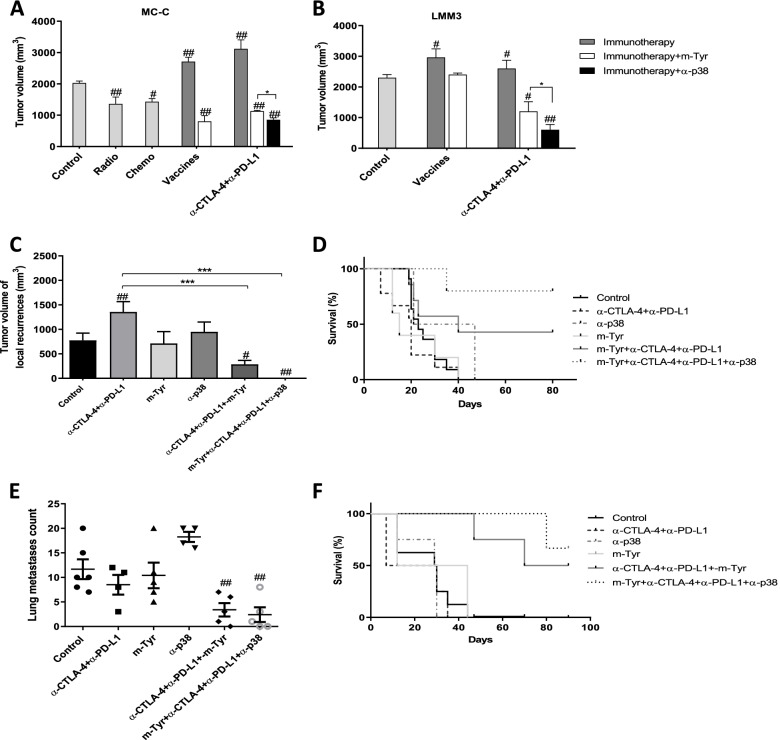Fig. 5.
Effect of combined immunological treatment on growing and residual tumors. (A, B) 1 × 105 MC-C (A) or LMM3 (B) cells were inoculated s.c. in the right flank. On day 17 of tumor growth, mice received immunotherapy [anti-CTLA-4 + anti-PD-L1, or antitumor vaccines (same schedules to Fig. 3)], immunotherapy plus m-Tyr (1.5 mg i.p. one dose, day 18) or immunotherapy plus anti-p38 (SB202190: 0.5 mg/kg i.p. for four days starting at day 18 of tumor growth). For MC-C, mice received a dose of radiotherapy (2000 grades) or vincristine (1 mg/kg i.p.). Tumor-bearing mice without treatment served as control. Tumor volumes were measured at day 35. (C, D, E, F). Effect of combined immunotherapy on local recurrences and metastases. Model of MC-C local recurrences: s.c. MC-C tumors (about 800 mm3) were surgically excised, leaving underlying skin (C, D) Model of lung metastases: s.c. LMM3 tumors (about 800 mm3) were radically removed with underlying skin when spontaneous metastases are already established (E, F) Mice were treated with immunotherapy (anti-CTLA-4 + anti-PD-L1, immunotherapy plus m-Tyr, immunotherapy plus SB202190 (on suture line for MC-C or i.v for LMM3) or immunotherapy plus both m-Tyr and SB202190. Operated mice without treatment served as control. Tumor volumes were evaluated two weeks after surgery. Survival percent were assessed 90 days after surgery. Data represent ± SEM of tumor volume (mm3) of 8—12 mice per group. For local recurrences and residual metastases, a sub-group was sacrificed 15 days after surgery to histological analysis and to count number of metastases. In all cases, the effects of treatments with m-Tyr or SB202190 alone were similar to control group and omitted for simplicity. Statistical comparison between experimental groups and control: # p < 0.05; ##: p < 0.01. Statistical comparison among experimental groups: * p < 0.05; ***; p < 0.001

